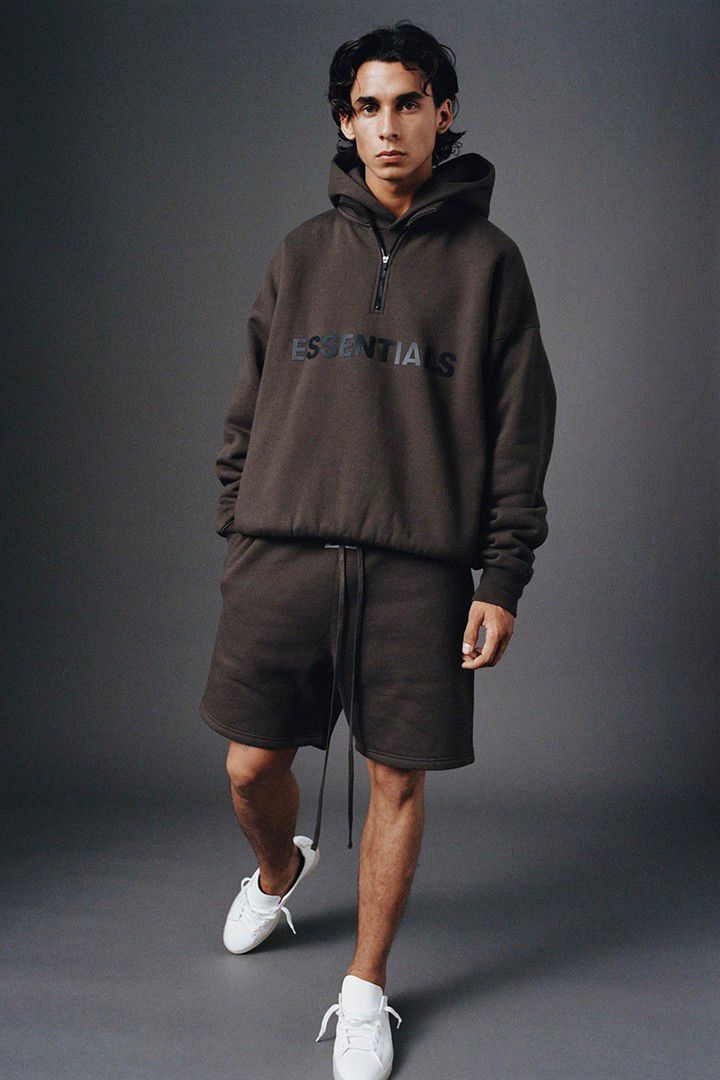Why Essentials Costs Less Than Fear of God

The realm of streetwear boasts a plethora of brands, each vying for the attention of fashion-conscious consumers. Among these, Fear of God (FOG) and Essentials stand out, both emanating from the creative mind of designer Jerry Lorenzo. However, a stark difference exists – their price points. FOG garments command a premium, while Essentials offers a more accessible take on Lorenzo's design philosophy. This disparity can be puzzling at first glance. Why is there such a significant price difference between two brands seemingly rooted in the same vision?
This comprehensive exploration delves into the intricate web of factors that contribute to the cost disparity between Essentials and FOG. We'll navigate the labyrinth of production, brand positioning, distribution strategies, and design ethos, ultimately revealing the rationale behind each brand's price tag.
Unveiling the Fabric of Cost: Production and Materials
The foundation of any garment's price lies in its production and the materials used. Here, we witness the first divergence between Essentials and FOG:
-
Manufacturing Location: Essentials primarily leverages factories in China, where labor costs are generally lower. FOG, on the other hand, often entrusts production to facilities in Italy or Los Angeles. These locations are renowned for their skilled craftsmanship but come at a premium due to higher manufacturing overheads.
-
Material Quality: Both brands prioritize quality fabrics, ensuring comfortable and durable garments. However, FOG often elevates its offerings with premium materials like heavyweight cotton, Italian-sourced fabrics, and unique washes. These high-end materials naturally come at a cost, reflecting in the final price tag. Essentials, while maintaining good-quality materials, utilizes more standard fabrics commonly found in higher-end mall brands. This translates to lower production costs per garment.
A Case Study: The Humble T-Shirt
Let's illustrate this difference with a familiar item – the t-shirt. A FOG t-shirt might be crafted from heavyweight, Italian Pima cotton, meticulously woven for a luxurious feel. The manufacturing process could involve skilled artisans in Los Angeles, employing specialized techniques for a unique wash or distressing effect. These factors – premium material, skilled craftsmanship, and intricate processes – all contribute to a higher production cost, reflected in the final price tag.
An Essentials t-shirt, while still utilizing good-quality cotton, might use a standard fabric with a slightly lighter weight. Production might occur in a Chinese factory with efficient processes. The focus lies on delivering a comfortable, well-made basic at a more consumer-friendly price point.
Brand Positioning: Cultivating an Image, Commanding a Price
Beyond production, brand positioning plays a pivotal role in determining price. Here's where the strategic intent of each brand becomes evident:
-
Target Audience: FOG targets a high-end streetwear audience seeking statement pieces and a luxurious feel. This audience values exclusivity, limited-edition releases, and a brand name associated with high fashion. Essentials, however, caters to a broader audience who desires a more accessible interpretation of Lorenzo's signature aesthetic. They prioritize comfortable basics that seamlessly integrate into their everyday wardrobe.
-
Brand Perception: FOG cultivates an image of exclusivity and limited releases. They leverage celebrity endorsements, high-profile collaborations, and carefully curated marketing campaigns to create a sense of mystique and desirability. This strategy drives up demand and justifies a premium price point. Essentials positions itself as a more approachable line, offering wardrobe staples at a consumer-friendly price. The focus here is on practicality and wearability, making Lorenzo's designs attainable for a wider audience.
A Tale of Two Cities: Retail Landscapes and Price Points
Distribution strategies further influence the cost disparity between the two brands:
- Sales Channels: FOG primarily sells through high-end boutiques and select online retailers. This curated approach fosters the brand's exclusive image and allows for tighter control over pricing. Essentials, on the other hand, reaches a wider audience through its own online store, collaborations with major retailers like Pacsun, Genesis17 and department stores. A wider sales network often translates to lower per-unit costs for Essentials.
The Power of Scale: Reaching a Wider Audience
Selling through a broader network of retailers allows Essentials to leverage economies of scale. By producing larger quantities, they can negotiate lower per-unit costs with manufacturers. Additionally, collaborating with established retailers allows them to share marketing and distribution expenses, further contributing to their price advantage. FOG, with its limited distribution channels, cannot benefit as readily from economies of scale.
Design Ethos: Balancing Statement with Simplicity
The design philosophy of each brand also plays a role in influencing the final price tag:
- Design Complexity: FOG leans towards a more avant-garde and deconstructed approach to streetwear. Their garments often feature unique silhouettes, unconventional construction techniques, and intricate detailing. These design elements require additional time and resources in the design and production stages, ultimately leading to a higher cost.